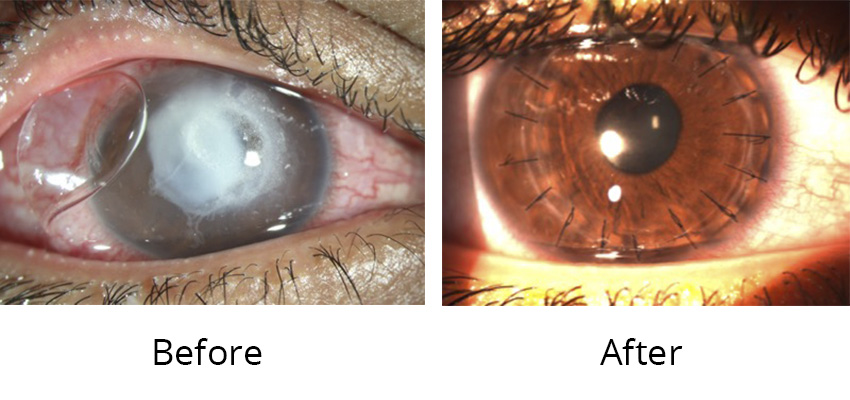
(305) 442-0066
Hialeah Office
North Miami Office

The first corneal transplant was performed in 1905. Over the last twenty years, however, there have been tremendous advances in development of microsurgical techniques and medications to prevent rejection of the transplant. In fact, because of these advances, corneal transplantation has become the most successful type of tissue transplantation surgery performed today.
The cornea is the clear tissue in front of the pupil and iris. You are actually looking through the cornea when you see the pupil, just as you would look through a window. Like a foggy window loss of transparency of the cornea will reduce vision. Clouding of the cornea can be related to many factors. Injury, infection, congenital disorders and aging are major reasons for loss of corneal clarity.
A full thickness corneal transplant consists of removing the cloudy central portion of your cornea and replacing it with a duplicate of healthy tissue from a donor. In a full thickness corneal transplant (penetrating keratoplasty) the donor cornea is fixed into position by sutures that are only one-third the thickness of a human hair.
It is important to understand that even after successful surgery the corneal transplant requires considerable time to adjust to its new environment. Therefore your vision may not begin to improve for several months and sometimes longer (up to a year). After the transplant has healed and the appropriate number of sutures have been removed, spectacles or a contact lens may be required to achieve your best vision.
Penetrating keratoplasty is an involved procedure that requires long term attention and follow up. For the vast majority of our patients whose vision has been restored by corneal transplantation, the effort has proven to be well worthwhile.

2441 SW 37th Avenue
Miami, FL 33145
(305) 442-0066

202 E 49th Street
Hialeah, FL 33013
(305) 442-0066

2050 NE 163rd Street North
Miami Beach, FL 33162
Direct Line (786) 708-8372